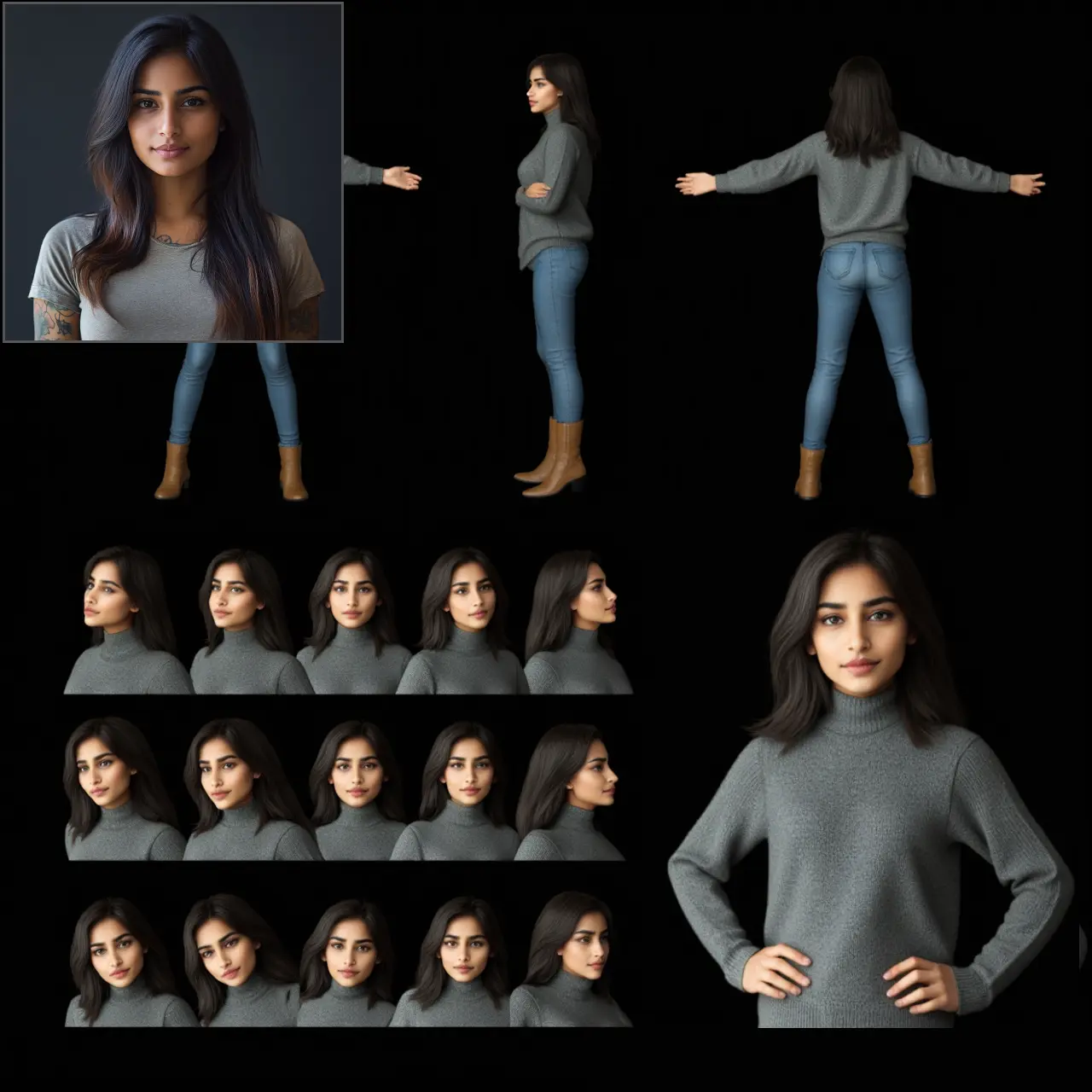ComfyUI Node: Iterative Mixing KSampler
Iterative Mixing KSampler
Categorytest
deroberon (Account age: 5580days) Extension
demofusion-comfyui Latest Updated
2024-05-22 Github Stars
0.09K
How to Install demofusion-comfyui
Install this extension via the ComfyUI Manager by searching for demofusion-comfyui- 1. Click the Manager button in the main menu
- 2. Select Custom Nodes Manager button
- 3. Enter demofusion-comfyui in the search bar
Visit ComfyUI Online for ready-to-use ComfyUI environment
- Free trial available
- 16GB VRAM to 80GB VRAM GPU machines
- 400+ preloaded models/nodes
- Freedom to upload custom models/nodes
- 200+ ready-to-run workflows
- 100% private workspace with up to 200GB storage
- Dedicated Support
Iterative Mixing KSampler Description
Sophisticated node enhancing image generation quality through iterative mixing techniques for precise artistic control.
Iterative Mixing KSampler:
The Iterative Mixing KSampler is a sophisticated node designed to enhance the quality and control of image generation processes in AI art creation. This node leverages iterative mixing techniques to refine and improve the sampling process, ensuring that the generated images are of high quality and meet the desired artistic criteria. By iteratively adjusting the sampling parameters, the Iterative Mixing KSampler allows for more precise control over the image generation, making it an invaluable tool for artists looking to fine-tune their outputs. This node is particularly beneficial for achieving specific artistic effects and ensuring that the generated images align closely with the artist's vision.
Iterative Mixing KSampler Input Parameters:
model
This parameter specifies the model to be used for the sampling process. It is a required input and ensures that the node uses the correct model for generating images.
seed
The seed parameter is an integer that initializes the random number generator, ensuring reproducibility of the generated images. It has a default value of 0, with a minimum value of 0 and a maximum value of 0xffffffffffffffff. Using different seeds will produce different variations of the generated images.
steps
This integer parameter defines the number of steps to be taken during the sampling process. The default value is 20, with a minimum of 1 and a maximum of 10000. Increasing the number of steps can lead to more refined and detailed images, but it will also increase the computation time.
cfg
The cfg (classifier-free guidance) parameter is a float that controls the strength of the guidance applied during sampling. It has a default value of 8.0, with a range from 0.0 to 100.0, adjustable in steps of 0.1. Higher values result in stronger guidance, which can help in achieving more accurate and desired outputs.
sampler_name
This parameter specifies the name of the sampler to be used. It is selected from a predefined list of samplers available in the system. The choice of sampler can significantly affect the style and quality of the generated images.
scheduler
The scheduler parameter determines the scheduling strategy for the sampling process. It is selected from a predefined list of schedulers available in the system. Different schedulers can influence the progression and final outcome of the image generation.
positive
This parameter provides the positive conditioning for the sampling process. It is used to guide the model towards generating images that align with the desired positive attributes.
negative
The negative parameter provides the negative conditioning for the sampling process. It helps in steering the model away from undesired attributes, ensuring that the generated images do not contain unwanted features.
latent_image
This parameter specifies the latent image to be used as the starting point for the sampling process. It serves as the initial input that the model iteratively refines to produce the final output.
denoise
The denoise parameter is a float that controls the amount of noise reduction applied during the sampling process. It has a default value of 1.0, with a range from 0.0 to 1.0, adjustable in steps of 0.01. Lower values result in less noise and smoother images, while higher values retain more noise and texture.
Iterative Mixing KSampler Output Parameters:
LATENT
The output of the Iterative Mixing KSampler is a latent representation of the generated image. This latent output can be further processed or decoded to obtain the final image. It encapsulates the refined and iteratively improved features of the generated image, ensuring high quality and alignment with the desired artistic criteria.
Iterative Mixing KSampler Usage Tips:
- Experiment with different seed values to explore a variety of image outputs and find the one that best matches your artistic vision.
- Adjust the steps parameter to balance between computation time and image quality; more steps generally lead to better results but require more processing time.
- Use the cfg parameter to fine-tune the guidance strength; higher values can help achieve more precise and desired outputs.
- Select different samplers and schedulers to see how they affect the style and quality of the generated images, and choose the combination that best suits your needs.
- Utilize the positive and negative conditioning parameters to guide the model towards or away from specific attributes, ensuring the generated images meet your expectations.
Iterative Mixing KSampler Common Errors and Solutions:
"Invalid model input"
- Explanation: This error occurs when the specified model is not recognized or is incompatible with the node.
- Solution: Ensure that you have selected a valid and compatible model for the sampling process.
"Seed value out of range"
- Explanation: The seed parameter value is outside the acceptable range.
- Solution: Verify that the seed value is within the range of 0 to 0xffffffffffffffff and adjust it accordingly.
"Steps value too high or too low"
- Explanation: The steps parameter is set to a value outside the allowed range.
- Solution: Adjust the steps parameter to be within the range of 1 to 10000.
"CFG value out of range"
- Explanation: The cfg parameter is set to a value outside the allowed range.
- Solution: Ensure that the cfg value is between 0.0 and 100.0 and adjust it as needed.
"Invalid sampler or scheduler"
- Explanation: The specified sampler or scheduler is not recognized or is incompatible with the node.
- Solution: Select a valid sampler and scheduler from the predefined list available in the system.
"Denoise value out of range"
- Explanation: The denoise parameter is set to a value outside the allowed range.
- Solution: Adjust the denoise parameter to be within the range of 0.0 to 1.0.
Iterative Mixing KSampler Related Nodes
RunComfy is the premier ComfyUI platform, offering ComfyUI online environment and services, along with ComfyUI workflows featuring stunning visuals. RunComfy also provides AI Playground, enabling artists to harness the latest AI tools to create incredible art.


